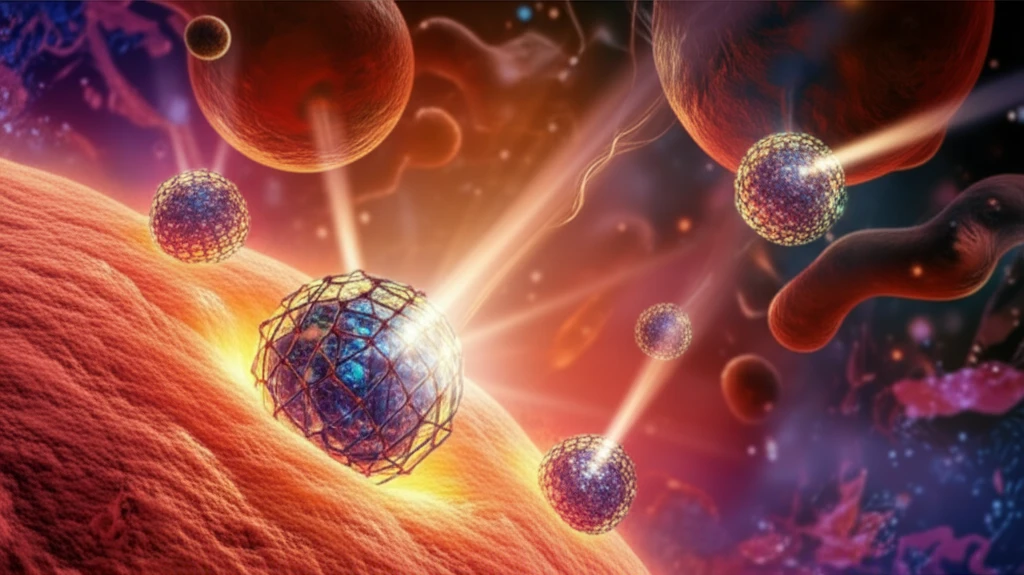
Nanomedicine's Next Wave: How Smart Nanoparticles Are Revolutionizing Cancer Treatment and Beyond
"Explore the cutting-edge research transforming nanoparticles into targeted therapies for early disease detection and personalized medicine."
Nanomedicine is rapidly changing how we approach healthcare, offering groundbreaking solutions for diagnosing and treating diseases at their earliest stages. At the forefront of this revolution are nanoparticles – tiny particles engineered to interact with biological systems at the molecular level. These aren't just any particles; they're designed to respond to specific signals in the body, delivering drugs, imaging agents, or therapeutic interventions precisely where they're needed.
Recent research highlights the incredible potential of these 'smart' nanoparticles, capable of targeting tumors, releasing medication only when triggered by a certain stimulus (like light or pH levels), and even assembling themselves into larger structures for enhanced therapeutic effects. This level of precision promises to minimize side effects, improve treatment efficacy, and open new doors for personalized medicine.
This article explores the latest advances in stimulus-responsive nanoparticles, delving into their applications in cancer therapy, diagnostics, and other biomedical fields. We'll break down the science in an accessible way, highlighting the potential benefits and discussing the challenges that lie ahead in bringing these innovative technologies to the clinic.
Smart Nanoparticles: A New Arsenal in the Fight Against Cancer

Cancer remains one of the most challenging diseases to treat, largely due to its complex nature and the limitations of conventional therapies. Chemotherapy and radiation, while effective in killing cancer cells, often harm healthy tissues, leading to debilitating side effects. Targeted therapies offer a more precise approach, but cancer cells can develop resistance, limiting their long-term effectiveness. Nanoparticles are emerging as a promising solution to these challenges, offering the ability to deliver drugs directly to cancer cells while sparing healthy tissues.
- pH-Responsive Nanoparticles: Tumors often have a more acidic environment than healthy tissues. Nanoparticles can be designed to disassemble or release their cargo in response to this lower pH, delivering drugs specifically to cancer cells.
- Light-Activated Therapies: Light can be used to trigger the release of drugs or activate therapeutic agents within the tumor. This approach, known as photodynamic therapy, allows for precise spatial and temporal control over treatment.
- Enzyme-Sensitive Nanoparticles: Certain enzymes are overexpressed in tumors. Nanoparticles can be designed to be cleaved or activated by these enzymes, releasing their payload specifically in the presence of cancer cells.
The Future of Nanomedicine: Challenges and Opportunities
While the potential of stimulus-responsive nanoparticles is enormous, significant challenges remain in translating these technologies from the lab to the clinic. Issues such as biocompatibility, toxicity, and scalability need to be addressed to ensure the safety and effectiveness of these therapies. Regulatory hurdles and the high cost of development also present significant barriers.
